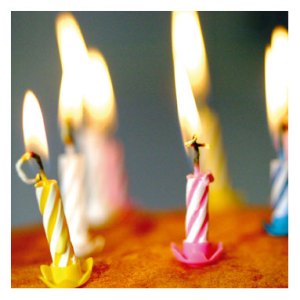I’m sure you’ve all heard by now of the school district that obtained an armored vehicle – actually, a Mine-Resistant Ambush Protected vehicle or MRAP if you want to impress someone – from the United States military through its Excess Property Program. The vehicle was free, and the district had to pay just the cost of transportation, which was $3.95 for regular ground, or $5,000 for 2-day express.
I remember when my school got its first tank, the graduating seniors’ class gift to the school they loved so much. At the dedication ceremony, the Class President, Class Vice President, and Class Risk Assessment Manager spray painted the sides of the tank with “Woo Hoo Class of Awesome! To Thine Own Self Be True!” There was an after-party, mainly for those three people, where they ate pizza and discussed what they were going to do with all their Barron’s review books.
Some concerned parents managed to have the tank classified as dangerous, so the school had to keep it under strict lock and key in the A/V room, along with the televisions on those tall skinny carts. The School Tank, as it came to be called, was taken out for special events like Homecoming, where the Homecoming King and Queen would ride atop the military vehicle, holding flowers and wearing their crowns, and waving to the crowds in the stands.
The following year, a neighboring school district, a rival in football, basketball, and Monopoly, got its own tank. It was larger and shinier than ours, and at the Memorial Day parade, at which all high schools in the region could march in whatever formation they liked as long as it met federal safety standards, their tank got more cheers from the crowds of parents and siblings.
Over the summer, the school diverted some funds earmarked for social studies books and ordered up another tank. This one was bigger and shinier than even the tank that our rival had obtained. Next to our first tank, it was a giant. We started calling them Big Tank and Little Tank. At lunchtime now, the school paraded the two tanks, sometimes Big leading, sometimes Little, around the track. All students could look out the window and see the two tanks parading. The tanks were driven by students, and for some reason this job attracted the same students who were in charge of the audio/visual technology.
At the Memorial Day Parade, Big Tank and Little Tank rolled down our town’s main thoroughfare in triumph. Parents and siblings cheered loudly and the day appeared to be ours. But then a sound…a buzzing chop-chop sound filled the air and all were quiet.
And then we saw it. A helicopter with a bad drawing of a wildcat – the mascot of our rival school – spray painted on the side. The tank was rolling on the street, directly underneath the helicopter, with balloons floating from the nozzle of the gun.
This was absolutely the last straw. Classes were cancelled for a week while school officials sold books and some desks where the chair and desk are fused together to get another military vehicle. As we sat at home and wished we could be back in English class reading Wuthering Heights, we speculated on what the new vehicle would be. What could be more impressive than a helicopter?
The Warren G. Harding High School Air Craft Carrier was delivered via overnight courier. Since our physical school building was not that near the water, we had to be relocated to a coastal town on the bay. It was a lot windier but we didn’t get as much snow.
One night our radar caught a few blips off the coast of Madagascar. Our commanding officer, who was also the official wearer of the school mascot costume at home football games, ordered our battleship and guided missile cruiser – gifts of the National Honor Society and Future Business Leaders of America, respectively – in for a closer look.
“Identify yourselves,” Kevin said into the microphone, which no one except him seemed to know was not connected to the unknown ships. “Prepare the guns,” he said to the crew, who were making posters for a pep rally. “This could get ugly.”
Our ships were moved into position and guns aimed. Now we were worried about the math test in third period and the possibility of war.
“Man the cannon!” Kevin said. “Ready, aim…”
“Wait! Wait!” said the Class Gluten-Free Bake Sale Coordinator. “What’s that on the side of the ships? I think it says…Go Wildcats?”
Yes, it was our dear rivals from the neighboring town. Looks like they had obtained for themselves a navy. Had it not been for the unsteady block printing and pathetic drawing of a wildcat on the sides of the ships, we would have launched on them and probably have had to make up our math test. The near risk of war marked a turning point in the relationship of our schools, and I can safely say that today we are not rivals but allies.
Editor’s Note: It turns out that the San Diego School District has returned the armored vehicle. I hope they kept the receipt.




